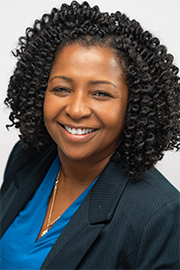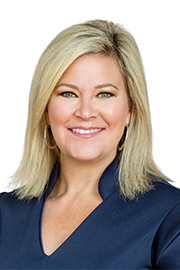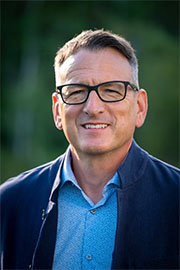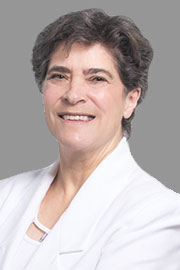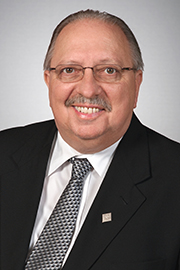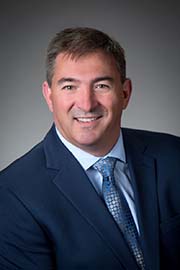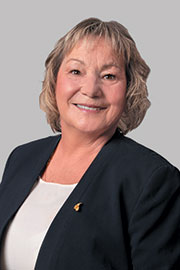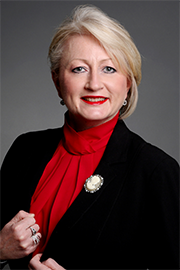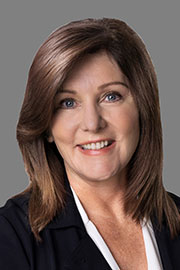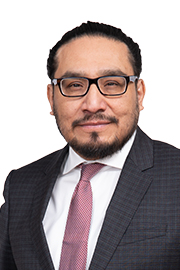- May/10/23 4:00:00 p.m.
Further questions?
- Hear!
- Rabble!
- May/10/23 4:20:00 p.m.
I just want to thank the member for her presentation today. I was one of the fortunate people who was able to go on a tour of this amazing facility that we have the privilege to work in every day. I wanted to ask the member and the Chair of our committee if you could just expand upon, for those who are watching today: When we were up on the roof, looking through the ceiling, what did you see that surprised you, which may be some reasons why we really need to get on with our decanting?
- Hear!
- Rabble!
- May/10/23 4:20:00 p.m.
Questions?
- Hear!
- Rabble!
- May/10/23 4:20:00 p.m.
I’d like to thank the member from Oshawa for her presentation. Every time we see individuals and groups—often school groups, young people—visiting us here in this Legislature, I think of them in the visitors’ galleries. The pitch of those stairs is really quite something that is shocking until you are actually in that position. I wonder if the scrollwork was added after the fact for safety purposes.
But particularly, my question is about education and those groups who come to visit us. How could this building and how could this precinct be made more engaging for schoolchildren and to other tour groups? How does the member envision this space being responsive to the needs of educational groups that come to visit us?
- Hear!
- Rabble!
- May/10/23 4:20:00 p.m.
I want to thank the member for her intervention. In particular, reflecting over the course of time, I was really struck by the access and equity piece, the groups of people, if you will, who haven’t had access to this place for one reason or another—and some of them, if not many, just bad stuff.
But as a guy who comes from Kenora, to her second point about where she is most concerned, what does this look like after—I’ve actually been thinking about what happens in between. I know we have to have a precinct here, but to your point about equity and access, I actually live two and three-quarter hours away from the Manitoba Legislature. Then here in Toronto—and I realize that this is the capital city of this province, but, Madam Speaker, I wondered what the member thought about improving access and equity for us, to have a roaming Legislature every once in a while where we could convene in cities around the province so that people had more access. Because I can tell you, not too many people from Kenora or Kiiwetinoong find themselves down in this neck of the woods.
- Hear!
- Rabble!
- May/10/23 4:20:00 p.m.
It’s that reminder that we come from all over the province. That’s why I was saying, every neighbourhood is going to say that they are the heart of their area. I don’t know what the committee will ultimately recommend, but if I were to imagine the opportunity to travel more, I would say that we have that opportunity with different committees, and maybe we make that a priority—the government can make that a priority in different ways.
Back to what I had been saying about the operations of this space—and not to limit, but I do know that broadcast and recording folks have to come with us when we travel. They came with us—and thank you—when we went to Ottawa so that we could ensure that we had Hansard, that we were accessible to Ontarians in the work that we did there. Whatever we do, we’re going to have to factor in everybody who works behind the scenes to make the magic happen, whatever that looks like.
But as a former educator, what if we had a section—and I’m just making this up—that was more of a museum? We have dark chapters in our history and we have bright spots in our history. What if we had a section that told about the power of government and the massive responsibility, the bad decisions when things go badly, and tell that story and actually educate in this space? I think that would be worth considering.
There’s a lot of stuff that happens in here that has been patchwork—and done really well. I’m standing here feeling safe and secure. However, we do have to plan for that inevitability of things requiring not just repair work but replacement work. As we’re fine-tuning some of the pieces, there is way bigger stuff behind the walls, in the roof—it’s really remarkable to know what happens behind the scenes here.
- Hear!
- Rabble!
- May/10/23 4:30:00 p.m.
I rise today in support of Bill 75, the Queen’s Park Restoration Act.
Someone told me once, before I was an MPP, “There’s no bad seat in this Legislature.” We are so privileged. Now, it is nicer to sit on this side; I’ll give you that, but there is no bad seat. We’re all so fortunate to have one of these desks that’s in front of us, and if you look at the little gold bar in front, it says “1901.” This place is fantastic. I walk in every day. It’s like living and working in a museum. We are all so privileged to be part of that.
Today, we’re debating an important bill. It’s not health care or education, but it’s actually this building and what we’re going to do with this building in the future. It’s really not about any of us who are sitting in the room right now; it’s about the future. It’s about future parliamentarians. It’s about our pages, who may end up being MPPs one day. It’s for us when we’re really, really old and coming to visit and hoping to see a nice restaurant or have—I don’t know—something to eat with our family. That is great history and great stories that we can tell.
These old bones that we feel every time that we walk through the halls, the massive oak doors and the massive hallways—to us, this is a grand old Legislative Building, and it reminds us daily of our obligations and our responsibilities and our duty to all of Ontario.
To the citizens of Ontario and to the residents of the city this place stands as a looming symbol up and down the grand promenade of University Avenue, and it’s a precious heart that beats democracy. Anywhere you go in downtown Toronto and you look right up University—it doesn’t matter what time of year—you see this beautiful pink building at the end of the street, and we’ll never forget that. We are so fortunate to be able to have that opportunity to take part in this little piece of our history.
It’s more than a bunch of offices. It’s more than some relics of the old era. We walk down the halls. We see photos. There’s a picture of my great-uncle from the late 1920s. It took me forever to find him, because there’s that one photo that—I guess that year when they took the pictures, they didn’t do it alphabetically, so he was a little hard to find, and then I found out it was down the hallway. Every day during COVID—at that time, we were sitting in Daryl Kramp’s office—I’d walk by. I finally found the photo. I finally found him, and I took a picture and I shared it with my mom, because that’s part of my history, the Hogarth family, who was able to be a member back here so very long ago. Families from all around will come and look at the pictures and see our history. But, again, we’re just a piece of that history. There’s so much future.
When we’re in committee rooms, you see these old photos of these men and their white hair—white men, of course, with their white hair—and that’s not who we are today. If you look at this room, it’s diverse. It’s eclectic. It represents the people of today. But even if you go back in time, someone like myself, someone like you, Speaker, wouldn’t be standing here. We would be the secretaries in the secretary pool. There was a secretary pool, and I’m sure they called it the ladies of the secretary pool, because—what was their job, to pick out curtains?
I was very fortunate to grow up in a house of strong women. My great-grandmother ran a hotel, and my grandmother ran hotels, and my mom never told us we couldn’t do anything, so I never, ever, thought that I couldn’t take a place in this Legislature. But maybe in the late 1920s, when my great-uncle sat here, smoking—and I’m sure they were smoking right in this room and probably even having a cocktail—times were different. And when you see the amazing faces here today, things have changed. Things have changed for the better, and we will continue moving that forward.
And as we look at this building and the future of the building, we’re just in the beginning steps. We have a great committee from all parties, and I think we work very well together. We know it’s not about us; we know it’s about our future and the future of this facility, where we go and how we get there. We want to take our time, and we want to make sure we get it right. From touring the ceiling, inside the rafters, we were actually right up there in the ceiling, looking down and watching proceedings happening, and it was quite fascinating how old this building was.
My colleague from Peterborough mentioned that, in 1893, what were they thinking of? Well, they certainly didn’t think of the Internet back then. They didn’t think of heating and lighting, and they didn’t think of cable. So much has happened, and if you go to any of the rafters, you can see cable, about this much cable. There is so much cable in this building. I’d like to see once they decant and take this all apart and how many kilometres of cable are actually running through this building. Anyway, I’ve probably lost the part where I was in my speech. I don’t know where I am.
But as I said, this is more than just the Pink Palace. Right now, this is a place of our business, our work and a place where history is made, a place where we create laws, a place where we create friendships and have debate on issues that affect the future.
Today, as we debate what happens with this building, we want to make sure that the people of all of Ontario are included in those discussions. It doesn’t matter what walk of life, who you are or where you come from, we want to hear from you. We want to make sure that this place is for everyone because it really is the people’s House.
We learned a lot of lessons from Parliament Hill when we were on our tour in Ottawa, things that went well, things that they could have done better, things that they should have thought of, and I think you always learn from mistakes of how we can do it better. One thing we have to do is—this is non-partisan, because it’s not about us. It is once again about our future.
I can go back in time when I worked here in the mid to late 1990s when we restored the roof. They actually took the roof down. It was actually little slates and you could go to the gift shop and buy a part of the roof. I bought some for everyone for Christmas, so a little plug for the gift shop here in the Legislature. They’re little slate tiles, which are coasters actually from the original roof. I have them at my house. We have them at my mother’s house, and my sister has them at her house because it’s a great memory of this building.
When you look at the roof being fixed, it was another piecemeal renovation, and that’s something our committee learned, that there were a lot of piecemeal renovations that maybe we don’t see here because this is all well put together, but if you go behind the walls—if anybody is a renovator and has an old house, once you open up those walls, there’s a lot that happens behind that. We want to make sure that we have a building for our future, for future parliamentarians. Sometimes when something gets too far gone, we can’t just do patchwork. There’s probably not enough duct tape, as the maintenance crew would say, to fix this place. We have to make sure we preserve all the important pieces. We sit here and look at the walls, we look at the wood structures, we have to make sure that those are all preserved for our future.
And the roof, I remember back in the 1990s when they started taking down the roof, and before in the 1990s, as a staff member, I used to sit up on the top—it used to be all white, and when they started cleaning it off, that’s when they noticed there were some designs behind it. Who knows what else we’re going to find in this place, but we have to make sure that we document and we preserve all the pieces of this building for the future.
One thing we can talk about when we are looking at building a new building, it’s not really just for cosmetic purposes. One thing we found out—there are not enough fire sprinklers here. The steam-supplied radiators are obsolete. The original piping is dated back to 1893. It’s encased in masonry and apparently it’s insulated with asbestos. There’s not enough power to various parts of the building. There are vast amounts of hazardous cabling which would be difficult to remove, as I mentioned. There is inadequate emergency power for the building, and there is a lack of smoke management systems for interconnecting floor areas. So there’s a lot of issues that we need to really look into and that’s why we can’t just fix this building; we need to rebuild this building.
For everyone’s safety, it’s best—as we learned from Parliament Hill and our tour there—to vacate these premises entirely while the work is under way. I know the committee will be looking at locations where we can go, and that’s why there is an importance that there’s a secretariat, because it leaves it in the hands of somebody who’s going to be there beyond our stay who can manage the project. So, again, if anyone’s had a renovation project in their house, you usually have someone in charge and they continue to make sure it happens as people come and go.
Now, I’m fully aware that the bill before the House today would impose a significant cost, and it means a new location for the business of government. Sometimes that is a political risk, but we need to be blunt about that and I think it’s an example of decades of long debate over what to do. In Ottawa, they’ve had years and years of debates over what to do with 24 Sussex Drive. They’re still debating on that location: Do you fix it or do you not? And as you wait for something to be fixed, it falls apart even more quickly, and then it becomes a fire trap. So what do you do? And that is the home of the Prime Minister of Canada. Well, you know, maybe we should be looking at some of these historical buildings and making sure that we prioritize them for our future.
After years of inaction, finally they agreed that 24 Sussex Drive might as well—“face the wrecking ball” was apparently a quote that someone had said. The cost for its replacement, if that day ever comes, will be astronomical. Could discussions continue to happen? But, again, it’s not being done. So here we want to make a decision to move on, making sure that we have a place for the future, a place that captures the history of the past, but also builds on the missing elements that—when this building was built in 1893, people weren’t included. I think that is the most important thing, that everybody in Ontario is included in this Legislature. Small towns, large cities—there should be something of every culture. We need to make sure that no one is forgotten.
To do that, I believe that we need to have a lot of public consultations and we need to hear from people about what is missing: “If you did a tour of the Legislature today, what would you like to see?” I think we can all go back to our hometowns and ask those questions, because the most amazing thing here is that we all come from somewhere different. Some of us come from small-town Ontario and some of us come from the big city. It’s easy, if you live in Toronto, to come to the Legislature, but as the minister said earlier, if you’re from Kenora, you probably don’t make it down as much. So let’s make sure that every community is incorporated in our final design and I think that’s something that we can bring to the table when we have those discussions.
We have to make sure that, when we do move out of this place, we don’t lose what we have. In Ottawa, we actually were able to stand on the floor of their Legislature and look around at the desks and be part of it, and it looked very similar to what Parliament Hill would look like. I hope that, when we have those discussions, we will make it look similar to this as well, because we certainly don’t want to miss the nostalgia of this room and the things we see every day. I think it’s extremely important that when we are moving, wherever that place may be, we remember the excitement of our desks and our little clip on our table and we don’t forget what’s here, because those parliamentarians that will be here—hopefully I get to still be here, but if not, those people who replace us will get to have that same experience, historical experience, I would say, that we all get here today.
Now, I think I want to ask if everybody could just look up at this amazing place we have. You know what? I do every day. I’m in awe of having the opportunity to stand here, speak to you, speak to the people at home, speak to my family and get to stand here in this place. We still have a lot to do so we can continue those traditions for future parliamentarians and making sure that we preserve the craftsmanship, the artistry, the artwork, the new artwork, the old artwork—everything that is important to the history of our democracy. We look at the marble, the brass, the panelling, the gargoyles that dot the exterior, the intricate mosaic tiles on the floor—these are the fingerprints left behind by generations of artisans, of history, of historians, for those who loved and just made the spirit of parliamentary democracy that’s embodied here. Speaker, we can’t let that go. I’d hate to go as far to say that this would be inappropriate if, as the temporary custodians of this place, we were to let it erode away any longer. We have a responsibility as parliamentarians to make sure that we preserve and make sure that we create a physical appearance of this building that speaks to us over the next century.
Now, it’s often been said that this place was built on a site of—let’s now say—a facility of persons experiencing psychological challenges. And it’s true: The then-University Hospital maintained a complex here as far back as 1842. And that some of the residents, they say, have haunted these halls. There’s actually a book that you can get downstairs at the Legislative bookstore that show some of the pictures of the ghost and the rumours of the ghost in this building. They say there’s a lady—and I don’t know if anyone’s seen her—known as the White Lady. She’s said to be dressed in long, flowing robes and long hair, and she’s bearing a mournful look. Maybe you’d be mournful too if you were trapped in here for over a century. There are tales, Madam Speaker, as documented on the website torontoghosts.org, that talk about further illustrations of ghosts in these halls. So if one were needed this way, that captures our hearts, but it also captures our imaginations. This is truly a piece of history.
Speaker, let me express my full support for the Queen’s Park Restoration Secretariat Act, 2023, and each and every one of the administrative provisions therein. This is not a vanity project for politicians. Most of us likely won’t be here when the job is finally done. It is an act that represents a celebration of our past and the promise of Ontario’s future. All you have to do is walk down the halls, go into the corridors, walk up the stairwells, go to the top floor and walk all the way down and you’ll see these old artifacts that are just a piece of our history.
I remember being staff here and we spent some time walking throughout the building when we were running from meeting to meeting, and there’s no place like it. There’s no place like it anywhere. We are so fortunate to be able to have that opportunity. I always say, when kids come to visit or young people come to visit, “Get lost in the building. Go see the fun parts. Go look at the pictures, and hopefully you can see yourself in the pictures. And if you can’t, well, then we have got to make that change.” Because that’s the important thing, that people see themselves as belonging to this place, that they see themselves as taking a seat in this place. That’s what Ontario is all about, and that’s what democracy is all about.
I guess I’ve had the privilege of working here since 1995. It’s been a long time. I have, as I said, sat in the rafters. I’ve had an office down the floor. I sat in the back lobby there, and then I actually finally got a seat in this House. So for me, there’s a lot of history in this place, and I think we have a great task to do. I’m honoured that the House leader put me on this committee and I have an opportunity to make a difference and work with this great group of politicians to make sure that we do the best for the people of Ontario. It’s important. It’s important that we get it right. It’s important we get it right not just for today, but for our future. It’s important that we don’t forget anybody. History will tell us who was forgotten in the past, and we have that opportunity to correct that right here in our pictures, in our statues, in our words we say, in the tone we use in this place.
Madam Speaker, I’m honoured to be a politician. I’m honoured to stand in this place, and I look forward to hopefully having a great debate and passing this legislation.
- Hear!
- Rabble!
- May/10/23 4:30:00 p.m.
I’m interested to know a little bit about the logistics. It’s an enormous amount of work to plan the future of this building but also an enormous amount of work to plan where we’re going to be in the interim. I’m wondering about where advice will be coming from in terms of the accessibility of both spaces.
I think of how often it happens that a space is not accessible because the right people weren’t asked; they weren’t part of the conversation. I’m thinking of AMO in Ottawa in the fall. When the escalators weren’t working, you couldn’t actually get to the fourth floor. I wonder if you could speak to that.
- Hear!
- Rabble!
- May/10/23 4:30:00 p.m.
Further questions?
- Hear!
- Rabble!
- May/10/23 4:30:00 p.m.
I will say that the committee hasn’t yet started to look at the specifics. But much of what is going to come, I think, from the secretariat is hopefully a bit of a back and forth so that the committee can be useful in specific ways and then broadly useful, yes. But we don’t have an idea of where we would be going as a committee. There are folks looking into options.
But what you have flagged I think is—at the forefront of everyone’s minds is that we want to do this well. The people who we’ll be consulting will have far more expertise than I or than others. You run into people who say, “Oh, you know where you should move? You should move to this building, or that building, or maybe Ontario Place”—just kidding, too soon?
But I would say that wherever we go, it’s going to end up being hopefully well-planned, and that’s part of the work of the secretariat, to do this in a way that takes the time it deserves.
Really, at this point, it’s learning from precinct properties. They have heard every complaint from all of us, and they have done their best to accommodate that. So what are some of their recommendations for during the transition and the next space and then the space after that, which would be to come back here? I’d say that we are looking forward to doing that work well. If anyone has an expert in their back pocket, send them our way.
- Hear!
- Rabble!
- May/10/23 4:30:00 p.m.
The stenos.
- Hear!
- Rabble!
- May/10/23 4:30:00 p.m.
To the member from Oshawa: The building was first opened in 1893. It has served the people of Ontario very, very well. But one of the things that we see in it—and I know it has been talked about already and some questions asked about it already—is when you look at the grandeur of this building, when you look at the style of everything, no one in 1893 took into consideration that there may need to be accommodations made for different people, whether it’s mobility challenges, whether it is audio, whether they have challenges with their eyesight. None of that was thought of in 1893 because that’s not what the world was thinking of.
Has thought been given to making changes so that we are accommodating a lot of other things that weren’t considered in 1893?
- Hear!
- Rabble!
- May/10/23 4:50:00 p.m.
To the member from Etobicoke–Lakeshore: As you spoke, you spoke about how mystical this place is, how magical it is. I often FaceTime my granddaughters in Halifax and say, “Grammy is at her castle again.” When you talked about the gargoyles outside and the history that’s in this building, you made it sound so wonderful—which it is.
Right outside my office on the third floor is that wonderful, large stained-glass window. When the sun came in today, it just made me feel just as proud as you and every member in this place that we do have a seat here. We are privileged to be here to serve the people in our ridings.
Now this building, as I said, has tremendous history, and the future of the Queen’s Park restoration and renovation is a perfect opportunity to be able to do it right. What are some of the things that you think the committee might be able to join together and express how we can keep some of the history here for the future?
- Hear!
- Rabble!
- May/10/23 4:50:00 p.m.
Question?
- Hear!
- Rabble!
- May/10/23 4:50:00 p.m.
I’d like to thank the member for her presentation. Recently, on the day to acknowledge missing and murdered Indigenous women, girls and two-spirited individuals, I had the opportunity to attend my alma mater, Althouse College, who had taken and repurposed their library into an Indigenous learning space as well as an outdoor area.
Specifically, we are sitting on quite a vast footprint here at Queen’s Park. My question to the member: How would you like to see the outdoor space reimagined to include Indigenous peoples? How can you foresee us making sure that this is a welcome and open space, building on those relationships?
- Hear!
- Rabble!
- May/10/23 4:50:00 p.m.
Thank you to the member from Etobicoke–Lakeshore for her speech. I have to say, it has been a privilege sitting on the committee for procedures and House affairs with you, under the chairperson as well.
I appreciated all the speeches. One thing that I’ve heard, a common thread, and I’d like to see if you could elaborate on that, is when it comes to technology and our, how shall I say, technology challenges currently in this building—I think we’ve all experienced it; in certain places, you can’t get WiFi.
Talking about the future, and even when we were in Ottawa and seeing how they did up the current chamber with technology and what the future may hold—if the member could elaborate on her thoughts on our challenges currently and into the future related to technology.
- Hear!
- Rabble!
- May/10/23 4:50:00 p.m.
Thanks for the question. I think everything is on the table right now. We’re having those discussions. We’re just really in the early stage.
I think the most important thing is consultation. It’s not for a small group of us to make those decisions. This is Ontario’s place. This is for Ontario. This is for Ontarians. This is for future politicians and parliamentarians. Certainly I’d love to do a design, but it’s not just about me. It has certainly never been about me. It’s about our communities. It’s about all of us. It’s about our history. It’s about our future.
Any type of information that they would like to share, please share it with the committee, because I think we all have something to say on how we’re going to make this place even better than it is today.
I actually have to applaud the staff. The staff who work here have done a phenomenal job making this work. I’m sure they all walk around with a roll of duct tape—my goodness, some of the stuff that you’d think was duct-taped together. But they’ve done a phenomenal job to make sure that we can debate; to make sure that these lights allow the proper lighting to come down, so when the cameras are rolling, we’re seen; the work that they do to make sure that when we’re called upon, our speaker comes on; and the translation, so we can certainly have our debate in multiple languages for those francophones in our province.
Technology is certainly something that is important, and it’s also the future. I think I was on the top floor, the third floor, when we saw the one room where a lot of the tech—I guess the background, where they have all the knobs and tubes and all that type of business. There’s lots of work to be done at the technology stage. All you have to do is go into any of these offices, and you will see a lot of cable, and none of that cable is even used today.
- Hear!
- Rabble!
- May/10/23 5:00:00 p.m.
Thank you, Speaker, and thank you to the member for Etobicoke–Lakeshore for her remarks. I enjoyed listening to stories about your family and stories about when you worked here in the 1990s, and I’m just wondering if you might take a moment or two and tell us about some of the changes you’ve seen in the building since the 1990s and if they’ve been effective.
- Hear!
- Rabble!
- May/10/23 5:00:00 p.m.
That’s a great question, because I think one of the most important things is to not lose what is here, and one of the things we saw when we were on Parliament Hill was that every piece was actually numbered, brought somewhere and then stored somewhere so it could be put back when the time came. So, that’s all going to be part of the decanting, and that’s why it’s such a large project, because they do want to take it out, they number them and then they’ll put them back in place. So we can’t—you are right. For your granddaughter and everyone’s grandchildren, we can’t lose what we have. It has to be remembered and the engineers have a system in place to make sure that that does happen.
Well, as a staff member, you have a little bit more time on your hands, so you’re running around and seeing the stairwells. What changed is the roof; it’s changed, and I believe there was—this was red at one time, if I’m not mistaken. The carpet was red. So that changed, and some of the chairs are newer.
When it comes to the offices, I remember there were vaults in some of the offices in this place, which is pretty cool because we used to have a party in the vaults down the hallway there. There were actual vaults, and at one point I think that’s where the money was, although this place doesn’t have any money.
So, what has changed? Well, technology, of course, has changed. We were not allowed cellphones. No one could have a cellphone or a computer. As staff, my goodness, BlackBerrys didn’t even exist. I remember we had pagers, so they’d have to find us. If you wanted to reach your member, as staff you actually had to send notes in. You couldn’t text them automatically. Certainly technology has changed, and what’s allowed here as an MPP now versus then is twofold. That didn’t even exist at the time.
That’s just in a short period of time. Imagine what’s going to happen in 20 years. Technology’s going to change so much. We can’t answer all those questions because it’s yet to come. So we have to be prepared for the future.
Certainly we want to keep it within cost. We don’t want the cost to go skyrocketing, but there should never be a “let’s not look at something.” I think this is an opportunity to get it right. We’ll want to take our time and look at it, and we want advice from everybody. As we’ve said, it’s important to get it right because it’s not about us; it’s about the future. So let’s continue those conversations.
- Hear!
- Rabble!
- May/10/23 5:00:00 p.m.
Meegwetch, Speaker. I’m very honoured to be able to speak on Bill 75.
We know this place was not built for people who look like me. As a First Nations person, as the First Peoples of these traditional territories and our ancestral lands—I guess, first off, I’d like to welcome everyone to our territories, to these lands that we now call Ontario.
I’ve been here close to five years, and when I first came, I didn’t feel at home. I knew that this place was a colonial place.
Coming from a northern reserve, being born in an Indian hospital—actually, in Sioux Lookout, we had two hospitals. Sioux Lookout had about 4,000 or 5,000 people, and we had two hospitals. One was a federal hospital, and the other one was a provincial hospital. The provincial hospital was for white people. The federal hospital was an Indian hospital for people like me, so that’s where I was born. And then I had to go up to my reserve, which is a small—at that time, it was probably 200 or 300 people. I had to go to school. I started kindergarten there, and I finished grade 8 there. When I went to school, I started learning about the ABCs, the language, the colours—it was in kindergarten. They call them Indian day schools now—and it’s that approach to, where I should not learn about my ways of life, my language. And then, I had to leave for high school, because we don’t have that school.
I’m just sharing this, Speaker, because it will go into what I think should be part of the changes to this building.
Then, I went to grade 9, and I went to a Mennonite school—and through that whole time, there were things that were happening that I thought were acceptable, but later in life, I found out that it was actually an Indian residential school. I moved out of there, and I went to a public school in Sioux Lookout, Ontario, which is where I live right now, and the name of that school was Queen Elizabeth District High School.
So there’s all this colonialism you see, and it becomes a way of life.
The land that, again—and going back to here—makes up what we now call Ontario includes traditional territories and multiple treaty territories. I always talk about treaties in this place. Again, some are shared, but I think the ones that most people are familiar with now have towns and cities in them—including this place, where Queen’s Park is, where Toronto is.
Queen’s Park is on the traditional territory of the Mississaugas of the New Credit First Nation, but the people of this nation do not live here. Their First Nation is over 100 kilometres away from Queen’s Park. These are stolen lands. These lands have been taken from First Nations. When I’m here, I’m always reminded of, it has always been the aim of most legislation in Canada’s history and Ontario’s history, including—it was to displace First Nations people from their lands. That’s why I grew up on the reserve. Reserves were created to take away people from their traditional territories. Reserves were created to put us on a small piece of land where we are provided with access to housing, access to health care, and to take away the people from these lands and the resources that are in those traditional territories. That’s how it displaces people.
Right now, I think on-reserve you’ll see the high rates of language loss, dependency on government, dependency on other things such as welfare. We never created welfare. There was never welfare before we had reserves. We were surviving on our own until we were placed on-reserve.
One of the ideas I always talk about as well is about Indian residential schools. We know that Indian residential schools in Canada and Indian residential schools in Ontario are one of the country’s most shameful legacies. These places were church-run. I went to a Mennonite school, and they strapped people, those Mennonites. Even though they pray to their God, and they hold—you know, they do things and they still did the things that they did. We were forced to cut our hair. We weren’t allowed to speak our language. They were government-funded institutions that Indigenous children, against their will and subject to—again, I talked about some of the abuse, the neglect, the dangerous living conditions, again to further the goal of assimilation, which is Canadian culture, religion. That’s what colonizers considered civilized.
I’m not supposed to be here, but I am here. I talk about that, and I think those are some of the things that when we start developing the concept on how we’re going to make this place more real, where you share the truth-telling stories of the real history of Canada—again, these schools I talk about are just one of the many tools that were used to displace us from our lands by removing the language, by removing the children.
Even in this place, I cannot even speak my language. If I started speaking my language to you, you would stop me. I know it. It’s just that way. But I know it’s not individually to you. This place does not accept me as a First Nations-language person. I cannot even speak it. It’s not allowed. That’s how it works, where it makes sure that I have no connection to my lands, to who I am as a First Nations person from northwestern Ontario, from Kiiwetinoong, from my reserve. There’s no connection to my language. There’s no connection to my way of life. Language is a way of life.
Speaker, I don’t really have time to say more about the Indian residential schools, but, collectively, I think there are many people still working for justice for the survivors of residential schools, and not only that, but for their families, who are still recovering, generations later.
One of the methods of learning we needed to be done for justice for the survivors was the 2008 creation of the Truth and Reconciliation Commission, a government-sanctioned body that spent years hearing testimony from residential school survivors within First Nations, within Métis, within Inuit communities, compiling the accurate report on the atrocities committed and the intergenerational effects of Indian residential schools.
The systems of colonialism are not broken; they’re working exactly the way they’re designed to, which is to take away the rights of the people whose lands we live on today. I know recommending far-reaching policy changes and fostering comprehensive educational programs would prevent such atrocities from ever happening again.
Speaker, I would also like to say that when the Truth and Reconciliation Commission released its final report in 2015—only eight years ago—it recommended 94 calls to action for the Canadian government to right the wrongs that have been done to Indigenous people. It was only the first step to begin dismantling the systemic racism, to stop the oppression, to stop the colonialism that has devastated our people as First Nations.
This is very relevant to what we’re talking about today, because what we have in this building is history. It’s your history. I don’t see any history of First Nations people here. There might be a painting up there. We have a room of First Nations paintings in 228 and 230. I look around this place and I only see one aspect of Ontario’s history. That’s your history.
This building is a physical representation of heritage and commemoration, but shouldn’t all Ontarians be able to look around and see themselves here at Queen’s Park, in this place where we say, “everyone’s House”? First Nations people—we are people too. We are from Kiiwetinoong. We are the Oji-Crees, we are the Ojibways, we are the Crees. We are all over. We have been here since time immemorial. We’ve been here for thousands of years.
“What is it like for you to be in this building?” I ask myself that. People ask me that. Sometimes I say, “It’s so colonial here.” It is for me. But where do we see ourselves as First Nations people in this building, when we start the work of this restoration of this building? I think that with this act this government has an opportunity to implement call 79 and call 82 from the Truth and Reconciliation Commission. Call 79 says:
“We call upon the federal government, in collaboration with survivors, Aboriginal organizations, and the arts community, to develop a reconciliation framework for Canadian heritage and commemoration. This would include, but not be limited to:
“(i) Amending the Historic Sites and Monuments Act to include First Nations, Inuit and Métis representation on the Historic Sites and Monuments Board of Canada and its secretariat.
“(ii) Revising the policies, the criteria and practices of the National Program of Historical Commemoration to integrate Indigenous history, heritage values and memory practises into Canada’s national heritage history.
“(iii) Developing and implementing a national heritage plan and strategy for commemorating residential school sites, the history and the legacy of residential schools and the contributions of Aboriginal peoples to Canada’s history.”
That’s Call 79 from the Truth and Reconciliation Commission.
“Call 82,
“We call upon provincial and territorial governments, in collaboration with survivors and their organizations, and other parties to the Settlement Agreement to commission and install publicly accessible, highly visible residential school monuments in each capital city to honour survivors and all the children who were lost to their families and communities.”
That’s what we need to do. That is the real history of Ontario. That is the real history of Canada. There’s an opportunity there.
To all the pages who are here, they are the change-makers. The kids—I know they’re listening. I know they do not understand that history that we didn’t learn.
There is an opportunity here in this bill to build on these calls and make sure that there’s a recognition of not just Indigenous people but our history, our real history.
We need to make sure that this act integrates Indigenous history, heritage values, our languages and memory practices into Ontario’s heritage and history that we see in this building. This can only happen with First Nations’ full consultation. This can only happen with our input, with First Nations’ input. We have to be able to see ourselves in this building. We have to be able to see that we are part of this place.
One of the things that I see—a very minor change—is the carvings up above the main entrance to the chamber. We have the wolf that speaks about humility; we have the beaver that speaks about wisdom; we have the bear that speaks about bravery; we have the turtle that speaks about truth; we have the raven that speaks about honesty; we also have the buffalo that teaches respect; but most importantly, we have the eagle as well that teaches you love.
Sometimes when I listen to everybody here doing business, especially during question period, you are not following those teachings. There might come a day if you continue that way when First Nations will ask for that back because you’re not respecting it. Meegwetch.
- Hear!
- Rabble!


